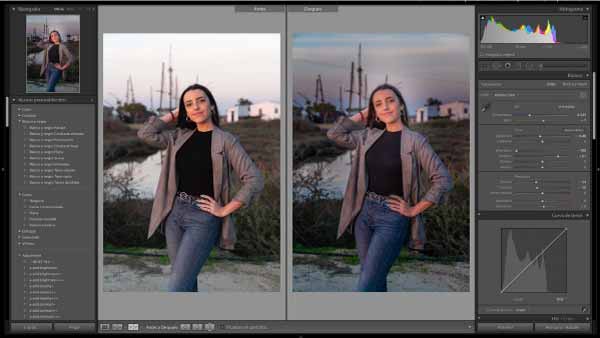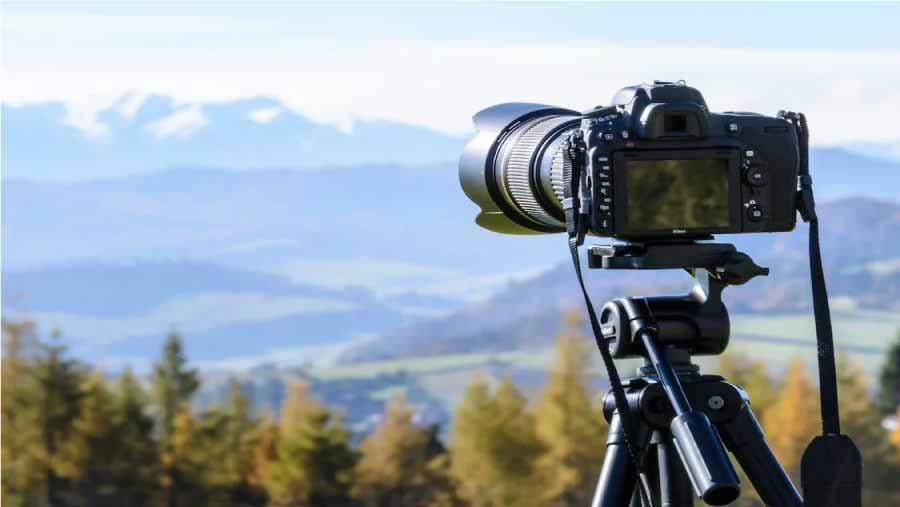Photo editing is the process of manipulating and enhancing digital images using specialized photo editing software. There are many photo editing tools available, both free and paid, offering a variety of editing options, from basic exposure and color settings to advanced techniques like skin retouching and removing unwanted objects.
Some of the most popular photo editing tools include Adobe Photoshop, Lightroom, GIMP, Pixlr, and Canva. Each of these tools has its own unique features and functionalities that allow users to create amazing and personalized images.
Among the most common photo editing techniques are cropping, color correction, exposure correction, red-eye removal, stain removal, noise reduction, creating shadows and reflections, removing backgrounds, adding text, and applying creative filters.
It is important to note that photo editing should be used sparingly so as not to alter the original image too much and maintain its authenticity. In addition, copyright must be respected and appropriate permission obtained before editing and sharing the images of others.
The trimming
Cropping is a photo editing technique that involves removing a portion of the original image to adjust the composition and improve visual quality. The goal of cropping can be to remove unwanted elements, improve the proportion of the image, highlight a particular element, or emphasize a specific part of the image.
In most photo editing programs, such as Adobe Photoshop or Lightroom, the crop tool is located in the toolbar and is usually shaped like a rectangle with dotted edges. By selecting the crop tool, you can adjust the shape and size of the rectangle to focus on the part of the image you want to keep.
After selecting the area you want to keep, you can crop to remove the rest of the image. It’s important to note that when cropping an image, some of the original visual information is lost, so care should be taken when choosing which elements are removed and what is kept.
You can adjust the image aspect ratio, such as size and shape, using the crop tool. For example, you can adjust an image in portrait format to a landscape format to suit certain needs, such as a brochure or website cover.
In general, cropping is a simple but effective technique for improving the visual quality and composition of an image.
Color correction
Color correction is a photo editing technique that involves adjusting the colors of an image to correct problems with lighting, white balance, saturation, contrast, and other aspects related to the color quality of the image.
In most photo editing programs, such as Adobe Photoshop or Lightroom, color correction can be done through tools such as the color adjustment panel or the color balance tool. These tools allow you to adjust color temperature, saturation, contrast, exposure and other parameters to improve visual quality and image balance.
Color correction is particularly useful when images are too warm or cool in tone, or when the lighting was not adequate during image shooting. It can also be used to create a particular atmosphere or mood in the image.
It is important to note that although color correction can be very helpful in improving the visual quality of an image, care should be taken not to overdo color adjustments to prevent the image from appearing artificial or distorted. Instead, it is recommended to use subtle adjustments and experiment with different options to achieve a natural and pleasing look to the eye.
Exposure correction
Exposure correction is a photo editing technique used to adjust the brightness level of an image. This is the amount of light that enters the camera when taking a photo and can affect the brightness and clarity of the image.
Exposure correction is used to adjust the light levels in the image so that dark details are more visible and lighter details do not burn out in the image. In most photo editing programs, such as Adobe Photoshop or Lightroom, exposure correction can be performed using tools such as the exposure adjustment panel or the curves tool.
Exposure correction can be performed by adjusting three main values: brightness, contrast, and shadows. Brightness affects the amount of light in the image, contrast affects the difference between light and dark areas of the image, and shadow affects the amount of detail visible in darker areas of the image.
It’s important to note that exposure correction can’t fix all lighting issues in an image. If the image is too dark or too light, exposure correction may not be enough and another photo editing technique is needed to correct the problem.
Overall, exposure correction is a useful photo editing technique that can significantly improve the visual quality of an image by adjusting light levels appropriately and subtly.
The elimination of red eyes
Red-eye removal is a photo editing technique that is used to correct the red-eye effect on images. The red-eye effect occurs when the camera flash is used in low-light situations and the flash light reflects off the retina of the eyes, resulting in a red glow in the eyes in the image.
In most photo editing programs, such as Adobe Photoshop or Lightroom, red-eye removal can be done using tools like the correction brush or the stain removal tool. These tools allow you to select the red-eye portion of the image and correct the color of the selected area to make the eyes appear more natural.
To correct red eyes, select the red-eye removal tool and click on the part of the eye with the red-eye effect. The program automatically detects the affected area and adjusts the color to correct the red-eye effect.
It is important to note that red-eye removal can be a useful technique, but it is not always effective on all images. If the red-eye effect is very pronounced or if there are too many affected eyes in the image, it may be necessary to use other photo editing techniques to correct the problem.
Overall, red-eye removal is a simple and effective photo editing technique that can significantly improve the visual quality of an image by correcting the red-eye effect and making the eyes look more natural.
Stain removal
Stain removal is a photo editing technique used to remove stains, blemishes, and other unwanted elements from an image. Stains can be caused by several factors, such as dirt on the camera lens, dust on the camera sensor, or even small imperfections on the skin of the person being photographed.
In most photo editing programs, such as Adobe Photoshop or Lightroom, stain removal can be done using tools like the correction brush, the stain removal tool, or the cloning tool. These tools allow you to select the affected area and replace it with a fragment from another part of the image, or simply correct the color and texture of the affected area.
To remove a stain, select the stain removal tool and click on the part of the image you want to correct. The program automatically detects the affected area and uses data from other parts of the image to correct the smudge.
It is important to note that stain removal can be a simple and effective technique, but it is important not to overdo it as it can make the image look artificial. It is advisable to use the tool carefully and subtly to obtain a natural result.
Overall, stain removal is a useful photo editing technique that can significantly improve the visual quality of an image by removing smudges and other unwanted imperfections.
Noise reduction
Noise reduction is a photo editing technique used to remove unwanted background noise from an image. This refers to the small dots, grains, and patterns that appear in digital images and can be caused by various factors, such as lack of light, use of high ISO sensitivity, or a low-quality camera.
In most photo editing programs, such as Adobe Photoshop or Lightroom, noise reduction can be performed using specific noise reduction tools. These tools allow you to select the type of noise you want to eliminate and adjust the noise reduction level to obtain the desired result.
To reduce the noise in an image, you select the noise reduction tool and adjust the parameters to obtain the desired noise reduction level. It is important to note that noise reduction can make the image appear smoothed or blurred, so it is advisable to use the tool carefully and subtly to obtain a natural result.
Overall, noise reduction is a useful photo editing technique that can significantly improve the visual quality of an image by removing unwanted background noise and making the image appear sharper and clearer.
The creation of shadows and reflections
Shadow and reflection creation is a photo editing technique used to add shadows and reflections to an image in order to improve the visual appearance of the image. These elements can be used to give depth and realism to an image, making it appear more three-dimensional.
In most photo editing programs, such as Adobe Photoshop or Lightroom, the creation of shadows and reflections can be done using specific tools, such as the shadow tool or the reflection tool. These tools allow you to select the area of the image in which you want to add the shadow or reflection and adjust the intensity level and angle of the shadow or reflection to obtain the desired result.
To add shadows to an image, select the shadow tool and click the part of the image where you want to add the shadow. The program automatically creates a realistic shadow in the selected direction and angle.
To add reflections to an image, select the mirroring tool and click the part of the image where you want to add the reflection. The program automatically creates a realistic reflection in the selected direction and angle.
It’s important to note that creating shadows and reflections can be an effective photo editing technique, but it’s important to use it sparingly so you don’t overdo it and make the image look artificial. It is advisable to use the tool carefully and subtly to obtain a natural result.
Overall, creating shadows and highlights is a useful photo editing technique that can significantly improve the visual appearance of an image by adding depth and realism.
Removal of funds
Background removal is a photo editing technique used to remove unwanted background from an image and make the main object of the image stand out. This technique is especially useful for images where you want to highlight a particular object, such as a person, a product or an animal.
In most photo editing programs, such as Adobe Photoshop or GIMP, background removal can be done using specific tools, such as the selection tool, the mask tool, or the magic wand tool. These tools allow you to select the area of the image you want to keep and remove the unwanted background.
Once the desired area is selected, it can be copied and pasted into a new layer or background. You can also add a new background to the image or leave it without background for a transparency effect.
It is important to note that the removal of funds can be a complex technique and requires patience and practice to obtain an accurate and natural result. In some cases, the main object in the image can be difficult to separate from the background, which may require advanced photo editing techniques, such as manually removing objects.
Overall, background removal is a useful photo editing technique that can significantly improve the visual appearance of an image by highlighting the main object and removing unwanted background.
Adding text
Adding text is a photo editing technique used to add text to an image. This technique is especially useful for adding titles, subtitles, descriptions or messages to an image in order to convey additional information or enhance its visual impact.
In most photo editing programs, such as Adobe Photoshop or Canva, adding text can be done using specific tools, such as the text tool. This tool allows you to select the font, size, color and other formatting settings of the text to obtain the desired result.
Once the text tool is selected, you can click on the area of the image where you want to add the text and start typing. Text can be moved, resized and adjusted for position and formatting using text editing tools.
It’s important to note that adding text should be careful and considerate so as not to overwhelm the image and distract from your main message. It is advisable to use fonts and colors that complement the image and that are legible and consistent with the style and intent of the image.
Overall, adding text is a useful photo editing technique that can improve the visual appearance of an image by adding additional information or emphasizing its main message.
The application of creative filters
Creative filter application is a popular photo editing technique that allows you to change the appearance of an image quickly and easily by using predefined filters. These filters can add artistic effects, such as sepia, black and white, vintage tones, among others, and can be used to enhance the visual composition of the image and convey a certain atmosphere or style.
In most photo editing programs, such as Instagram, VSCO or Lightroom, you can find different creative filters that can be applied to images with a single click. In addition, many of these programs also offer the possibility to adjust filter settings for more accurate and personalized results.
It is important to note that the application of creative filters should be used with caution and consideration, as it can affect the quality and integrity of the original image. Therefore, it is recommended to apply the filter in a separate layer and adjust its intensity and opacity to achieve the desired result.
Overall, applying creative filters is a useful photo editing technique that allows you to change the appearance of an image quickly and easily, and add a personal and artistic touch to it. However, it is important to use this technique with care and consideration so as not to lose the quality and integrity of the original image.


